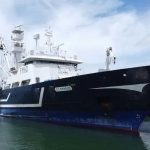Smart buoys developed by Spanish technology company Satlink are being used for the first time in a groundbreaking project focused on beach regeneration. This innovative new OceanDepth buoy used an integrated echosounder and algorithms to precisely measure the different layers of marine sediment accumulated on the seabed in coastal areas. The thickness of these layers can be used as a key indicator for beach regression, and for monitoring the short- and long-term dynamic processes in real time.
This pioneering project, launched by the coastal town of Canet de Berenguer and supported by the Spanish Ministry of Science, Innovation and Universities, begins this week. The Canet de Berenguer City Council aims to curb coastal erosion, a natural process caused by sediment displacement along the coastline and towards deeper parts of the sea, often – especially in the Mediterranean region – exacerbated by human activity in the coastal zone that impact coastal dynamics.
Satlink’s smart buoys are specifically designed to monitor the bathymetry of beaches and coastal areas in real time. The collected data will be processed and transmitted to a data platform where computational software analyzes the evolution of beach profile and, on a potential second phase of the project, the effectiveness of installing artificial reefs towards its protection.
The project was kicked-off on 7th December by the town’s mayor, with the attendance of Minister of Science, Innovation, and Universities Diana Morant. The project’s potential results have generated significant anticipation within the scientific and coastal communities, and embody the possibilities for coastal management by using new technologies. During the presentation, the minister emphasised that this is an ‘exciting and necessary’ initiative to address the impact of climate change on coastlines, stating that ‘we need knowledge and an understanding of what’s happening on the seabed to make the best decisions.’
‘The solution to beach regression lies in innovation, where technology allows us to model the seabed and understand sediment movement to make informed decisions about installing a submerged reef to reduce wave energy and prevent further coastal erosion,’ said Pere Antoni Chorda.
The OceanDepth buoy is supported by Satlink’s 30 years of experience in developing marine technology solutions, represents a significant step forward in coastal monitoring. It provides real-time data on the seabed, water levels, and wave height. Thanks to its satellite connectivity, it ensures instant and accurate data transmissions, enabling continuous monitoring of beaches and coastal areas.
Powered by solar energy, which eliminates the need for manual intervention after deployment and measuring campaigns to continue as long as desirable, OceanDepth is supported by an intuitive management software that allows for seamless interaction with the data collected by all deployed buoys. This software does not only displays real-time measurements and locations, but also offers a detailed historical record of bathymetry and its changes over time.









